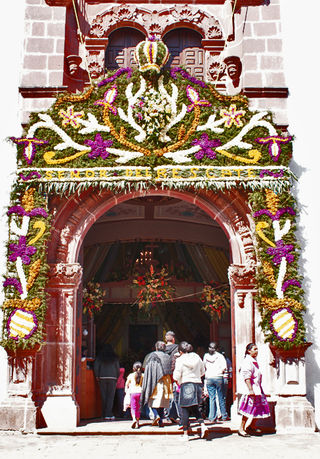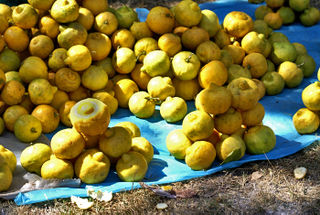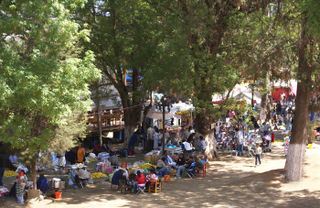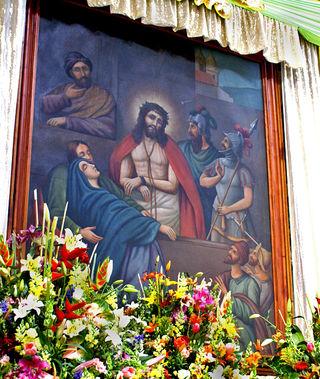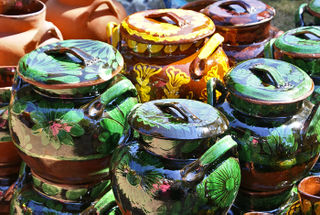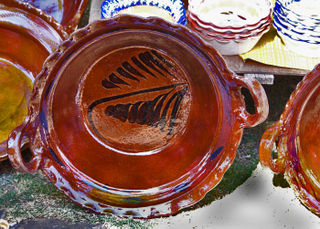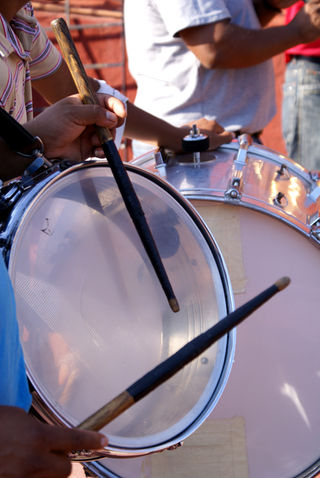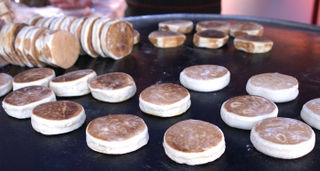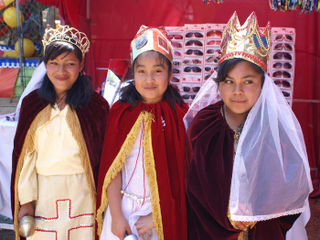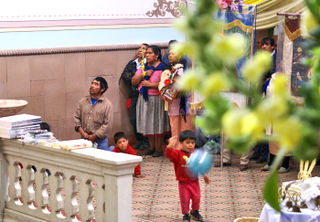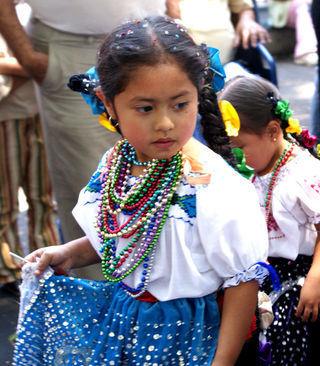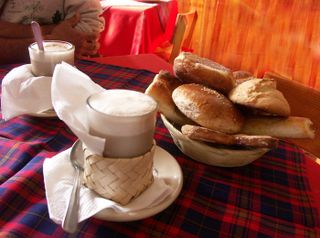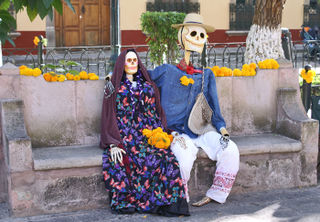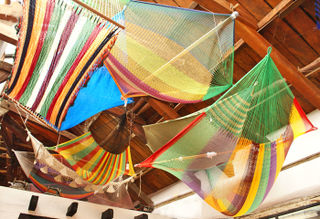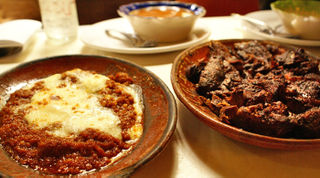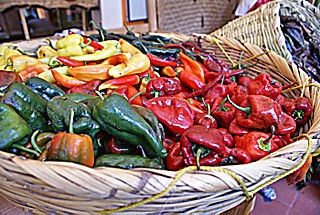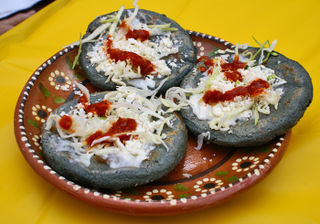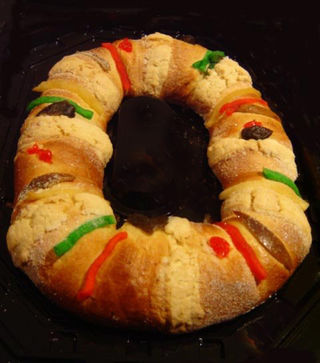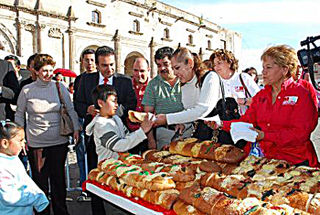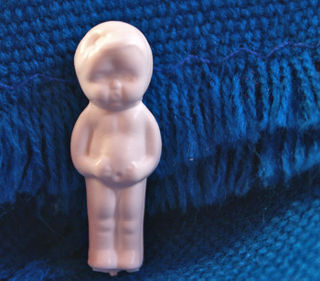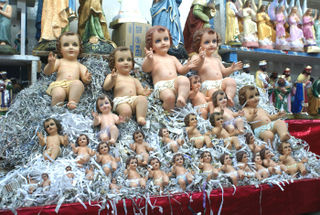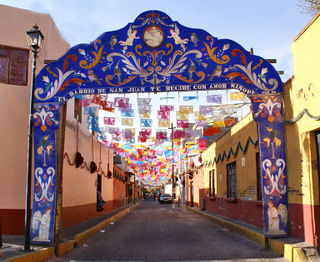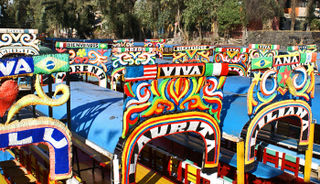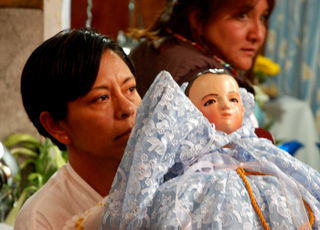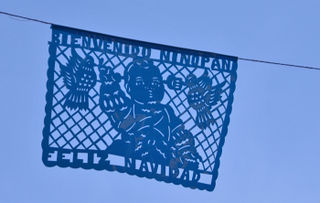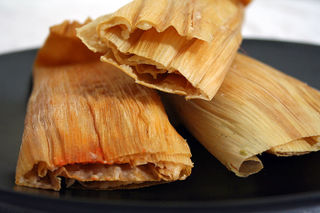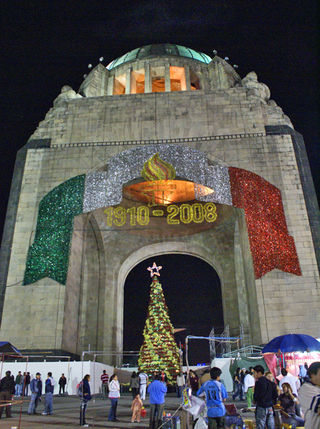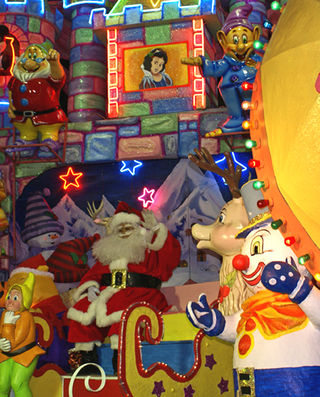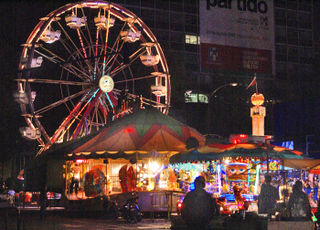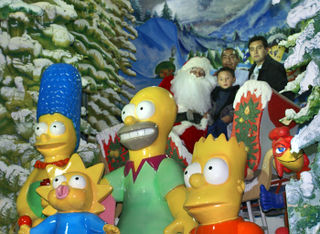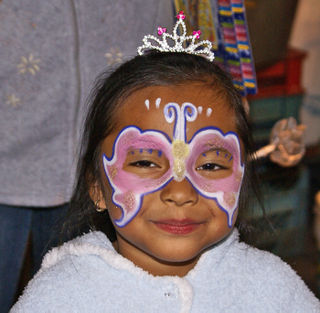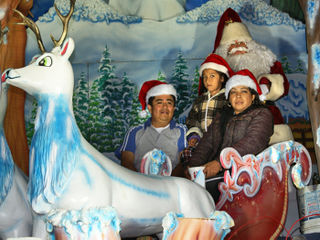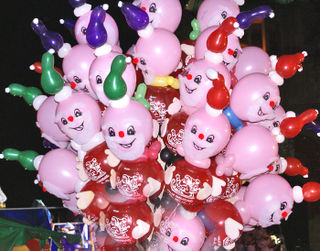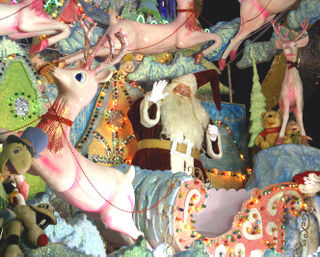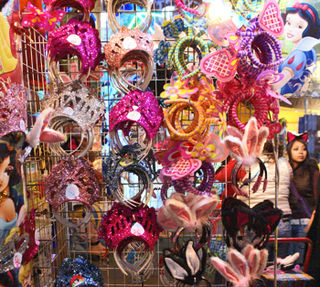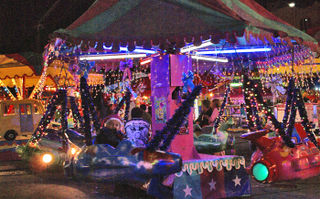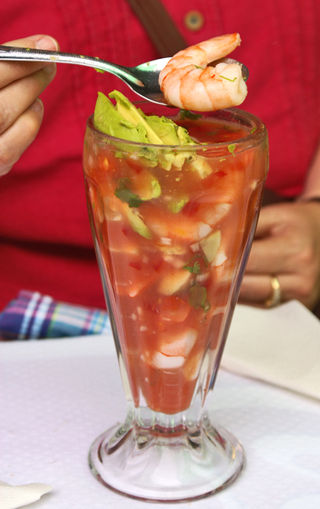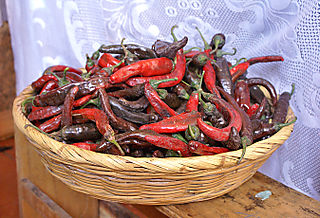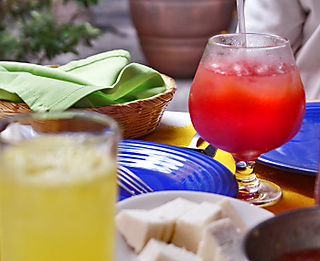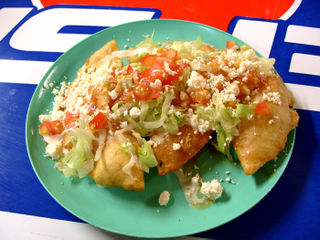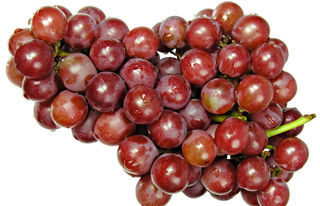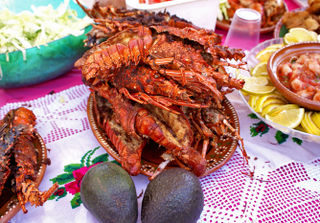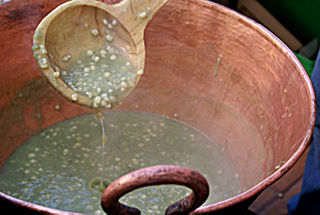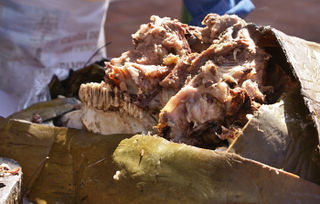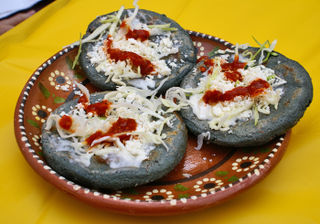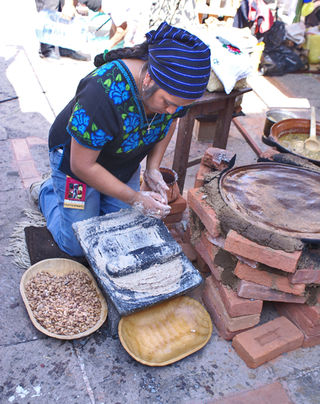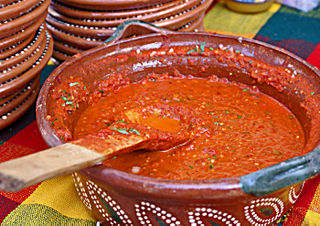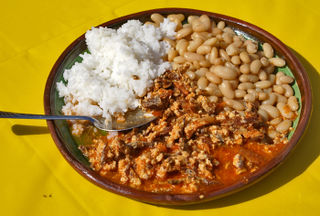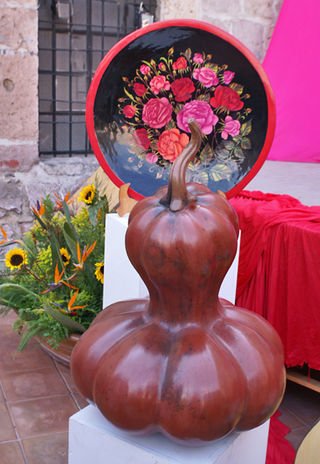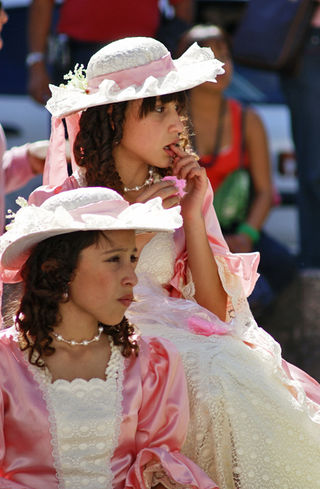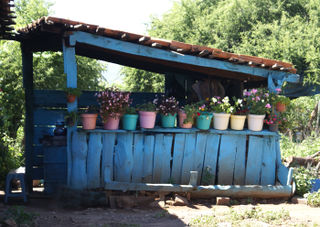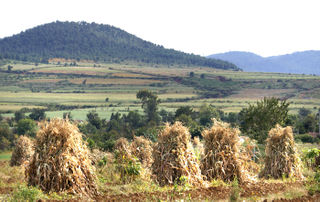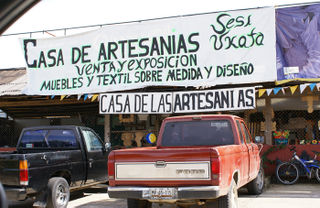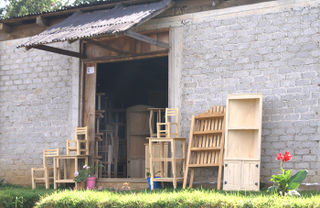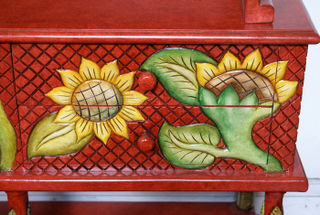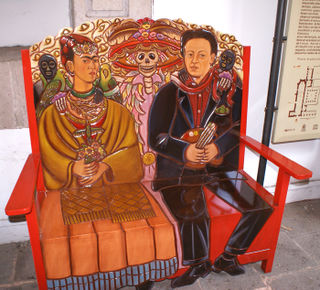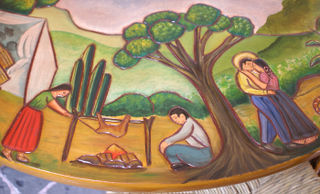
The sun-filled inner patio of the Ex-Convento de San Francisco de Asís (former monastery of St. Francis of Assisi) in Tzintzuntzan, Michoacán.
Twenty-seven years ago, Mexican friends took Mexico Cooks! to Tzintzuntzan for the first time. We toured the crafts market, the pottery market, the church atrium, and its three churches. That day, for the first time, we visited the 17th Century Christ figure known as the Santo Entierro (the Holy Burial).
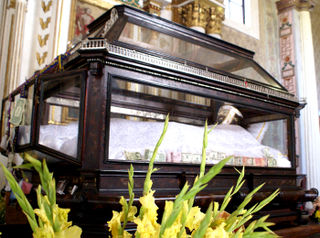
The legendary Santo Entierro is displayed in a glass coffin. The faithful believe that his limbs continue to grow. At the left-hand end of the coffin, the extension added for his feet has a US bill taped to the glass; there is more US and Mexican currency inside the coffin, along the lower front edge. The figure's toes are once again reaching their limits.
After visiting these sites, my companions guided me to the Ex-Convento de San Francisco de Asís. We briefly toured the patio, where the walls, decorated with unfortunately deteriorating 18th Century catechetical frescoes, amazed me. Over the course of nearly 30 years, I've visited the Ex-Convento many, many times, especially to see the frescoes.

These are the partially restored portales (colonnades) which enclose an inner garden of the Ex-Convento. Construction lumber braces the arches on all four sides of the building.
Within the last few years, the Ex-Convento has begun renovation. The monastery building, designed and initiated in 1530 by Spanish architect (and Franciscan friar) Fray Pedro de Pila, has fallen into disrepair over the last 450 years. Currently owned and managed by the community of Tzintzuntzan (including Father Serafín Guzmán Rivera, the parish priest; Abel Martínez Rojas, the mayor, and a counsel of townspeople headed by the Secretario del Consejo, Profesor Filiberto Villagómez Estrada), the Ex-Convento is being restored little by little as funds for the work are collected. Suffice it to say that collections are slim in this rural Mexican town. A Mexican foundation, Adopte Una Obra de Arte (Adopt a Work of Art), is making it easier for both small and large donors in Mexico and the rest of the world to be aware of and help pay for this important restoration effort, among other efforts on behalf of other historical sites.
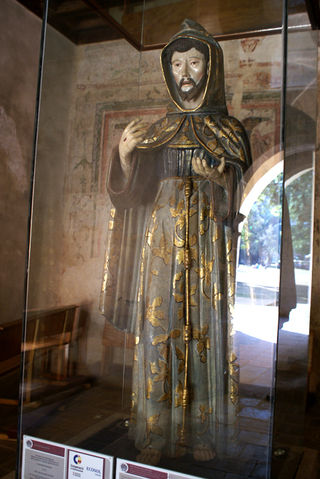
This 16th Century statue of St. Francis of Assisi stands in the entrance to the Ex-Convento's cloister. The Franciscan order opened the Ex-Convento de San Francisco in Tzintzuntzan; it was the first monastery in the state of Michoacán.

Alfarje–openwork wooden Moorish panels built by the early Spanish settlers–decorate the four corners of the cloister ceiling. The alfarje is in the process of restoration.
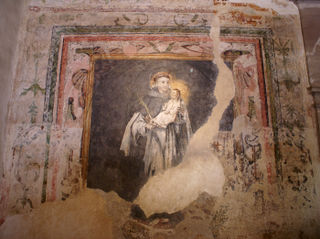
Restoration of the frescoes around the cloister is a slow and costly process requiring expert attention. Rather than re-paint missing parts of the frescoes, only the remaining portions of the paintings are restored as they are uncovered.
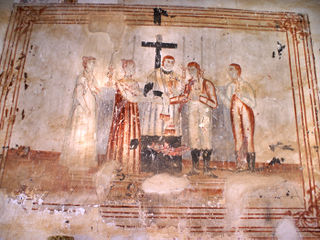
Seven catechetical panels, originally painted in the 16th Century, depicted the sacraments of the church. Three panels remain; this fresco represents the sacrament of marriage. The 16th Century frescoes were over-painted in the 18th Century, as you can see by the participants' dress.
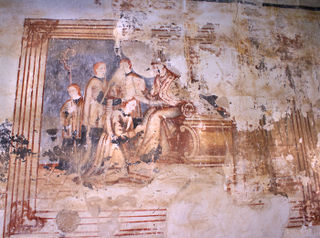
The sacrament of Holy Oils. These frescoes were painted to offer visual illustration of some tenets of the Roman Catholic Church to indigenous people who could neither read nor write, whether their own language or the Spanish of the conquistadores.

The sacrament of Extreme Unction.
Mexico Cooks! was astounded to learn that the Ex-Convento restoration consists of far more than the cloister, the colonnades, and the frescoes. When Secretario del Consejo Filiberto Villagómez Estrada and volunteer docents Victoria María Moreno and Patricia Gabriel Prado opened an unnoticed door, our jaws dropped to see the partially restored kitchen, refectory, and upstairs hallways of the original building.
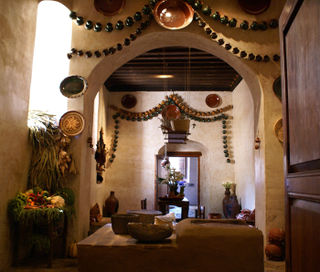
Decorated with beautifully hand-made Tzintzuntzan cups, plates, and pots, the kitchen takes on a magical aspect as golden early afternoon sunlight pours in its windows.
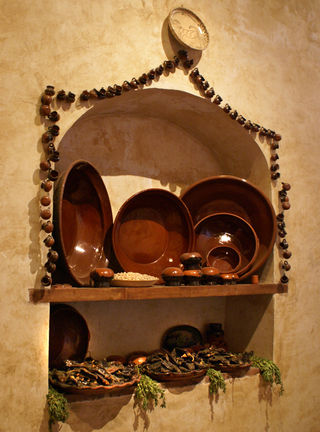
A kitchen wall niche filled with simple, richly glazed Tzintzuntzan cazuelas, some filled with deep maroon dried chiles, basks in the glow of sunlight. These rooms, elegant and austere, are not usually open to the public, as their contents have not yet been classified.
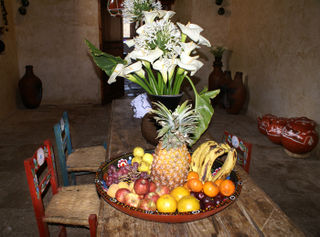
Locally grown fruits and alcatraces (calla lilies) grace this low table surrounded by painted rush-seat chairs. Burnished and painted ollas de barro (clay cooking pots) rest on the floor to the right.
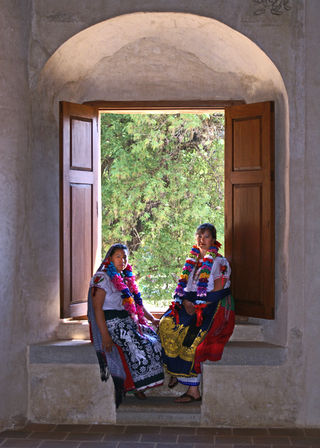
Patricia Gabriel Prado (left) and Victoria María Moreno (right), volunteer docents, guided Mexico Cooks! through the cloister level of the Ex-Convento. They are wearing women's ropa típica (typical clothing) for a Purhépecha fiesta. Their long aprons are intricately hand-embroidered in cross stitch, as are their blouses.
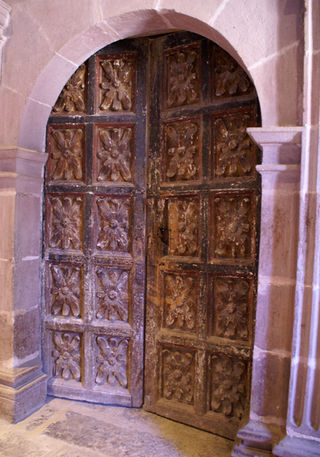
Dating to the 16th Century, these wooden doors lead to the monastery's original refectorio (dining room).
If you are planning an event in this part of Mexico–a private party, a wedding, a meeting–the rooms of the Ex-Convento are available for rent. All rental stipends are donated to Adopte una Obra de Arte for the continuing restoration of the building. Please email Mexico Cooks! if you'd like to contact the Foundation.
Adopte una Obra de Arte maintains a Spanish-language website where you can see all of the restoration work supported by the organization: Adopte una Obra de Arte.
We are grateful to Secretario del Consejo Profesor Filiberto Villagómez Estrada and Lic. Tania González Mendoza, Coordinadora del Centro Cultural Comunitario "Tzintzuntzan", for their kind permission to visit and photograph the Ex-Convento de San Francisco de Asís. Mexico Cooks! sincerely hopes that our readers will take a serious interest in the continuing restoration of this 16th Century work of art and architecture.
Looking for a tailored-to-your-interests specialized tour in Mexico? Click here: Tours.
